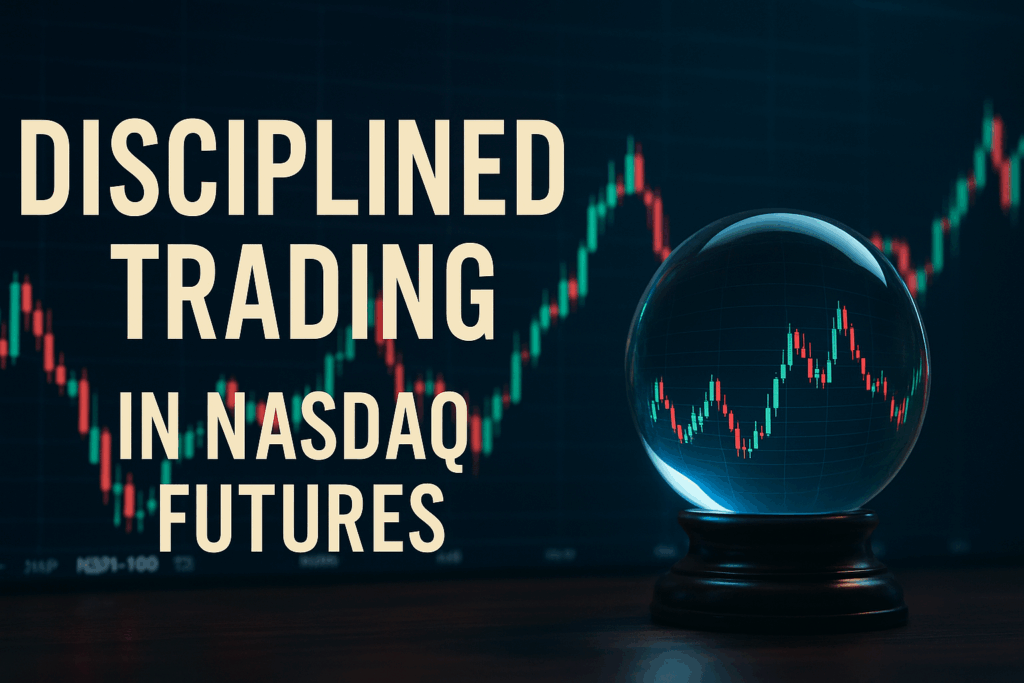In the fast-paced world of futures trading, few instruments offer the excitement, volatility, and opportunity of Nasdaq futures—specifically, the E-mini Nasdaq-100 (NQ) and Micro Nasdaq-100 (MNQ) contracts. However, with high reward potential comes significant risk. That’s why discipline is not just a helpful trait in Nasdaq futures trading—it’s an absolute necessity.
Why Discipline Matters in Nasdaq Futures Trading
Nasdaq futures are known for their large intraday swings, which can lead to rapid gains or devastating losses. Without a disciplined trading strategy, traders can easily be swayed by emotions such as fear, greed, or frustration—leading to impulsive decisions, revenge trading, and blown accounts.
Discipline allows traders to:
- Stick to their trading plan.
- Respect risk management rules.
- Avoid overtrading.
- Keep emotions from driving decisions.
- Build consistency over time.
Core Pillars of Disciplined Trading
1. Have a Trading Plan—and Follow It
Your plan should detail:
- When you trade (e.g., only during the New York session).
- What signals you act on (e.g., breakouts, EMA slope reversals, ADX crossovers).
- Risk per trade (e.g., risking $100 with a fixed or trailing stop).
- Exit strategy (e.g., fixed targets, trailing stops, or structure-based exits).
Even the best plan is useless if not followed. Discipline is what transforms a plan into profit potential.
2. Risk Management Is Non-Negotiable
The most consistent traders are the ones who survive. They do this by:
- Defining maximum daily loss limits.
- Using position sizing tied to account size and volatility.
- Placing stop-loss orders with every trade—never relying on “mental stops.”
- Avoiding over-leverage, even with Micro contracts.
For example, if your daily max loss is $300 and each NQ trade risks $100, you know to stop trading after 3 losses.
3. Limit Exposure to High-Volatility Events
CPI reports, FOMC meetings, and Fed speeches can produce sharp spikes. Disciplined traders either:
- Sit out during these times.
- Reduce size and widen stops to accommodate volatility.
- Use bracketed orders with tighter risk/reward parameters.
Having scheduled news events on your calendar helps prevent being blindsided.
4. Avoid Overtrading and Revenge Trading
Many traders lose their edge not from bad strategy but from trying to “make it back.” This leads to emotional, illogical trades and account drawdown.
Discipline means:
- Taking breaks after losses.
- Capping trades per session (e.g., max 5).
- Recognizing when you’re no longer following your edge and walking away.
5. Review and Reflect
After-market review is a hallmark of disciplined traders. Use journals or platforms like Tradovate’s reporting tools to log:
- Entry/exit screenshots.
- Reason for the trade.
- Mistakes or emotions involved.
- Lessons learned.
This creates a feedback loop that reinforces discipline and improves performance over time.
Mindset Is the Glue
Technical analysis is important. So is a solid system. But without the right psychological discipline, both are easily sabotaged. Professionals often trade boring, repetitive setups—not because they lack creativity, but because consistency beats excitement in trading.
Remind Yourself:
- One trade won’t make or break your career.
- Missing a move is better than chasing and losing.
- Discipline is your competitive advantage—especially when others are losing theirs.
Final Thoughts
Nasdaq futures offer an incredible landscape for active traders. The combination of liquidity, volatility, and near 24/5 access makes them an attractive vehicle for speculation and income.
But to thrive, discipline must be your foundation. Create a plan, define your risk, and follow your rules with laser focus. In a game where chaos and emotion are constant threats, disciplined trading is your shield—and ultimately, your path to longevity and success.

